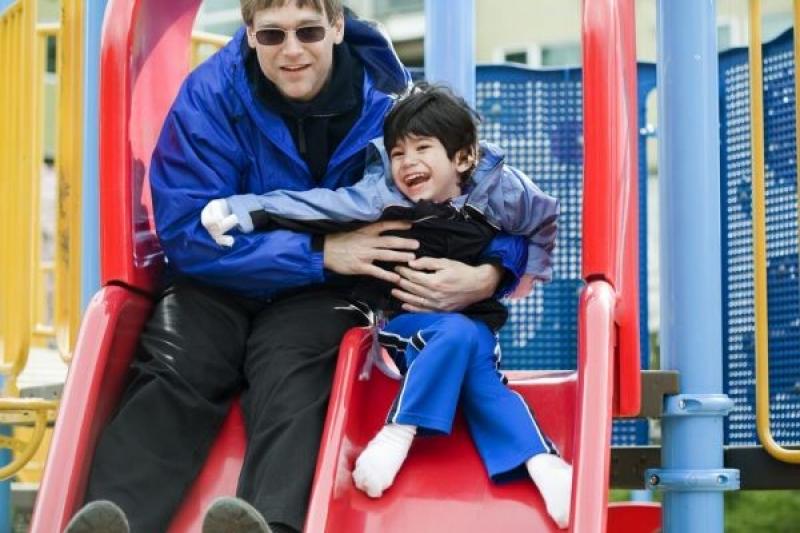Diagnosing Cerebral Palsy

Most cerebral palsy cases are diagnosed within the first two years of a child's life. According to medical experts, mild cases might not be diagnosed until the child reaches age four or beyond. Cerebral palsy has many causing and contributing factors, including gene mutations, maternal infections, brain infections, infant jaundice, or the lack of oxygen in the brain during labor and delivery. In the last scenario, parents may have a medical malpractice case. Still, before taking legal action, let’s first understand cerebral palsy symptoms and diagnosis methods.
Cerebral palsy symptoms to look for include:
- Checking growth and development when compared with children of similar ages.
- Checking muscle tone for signs of sagging.
- Observation of the child losing muscle control.
- Hearing and vision difficulties.
- Poor - often outlandish - posture.
- Poor balance and coordination.
- Exaggerated reflexes.
- Tremors and involuntary jerky movements.
- Slow, writhing movements.
- Difficulty walking, running, or jumping.
- Favoring one side of the body over the other.
- Difficulties with fine motor skills like tying shoes, buttoning shirts, and using tools like pens, pencils, and crayons.
How Confirm a Diagnosis of Cerebral Palsy
Your doctor has several diagnostic tools to confirm cerebral palsy in the diagnosis process. These include the following tests:
- Brain Scans. Imaging technologies can reveal damaged or abnormally functioning areas of the brain.
- MRIs use a magnetic field and radio waves to produce a cross-section 3D image of the brain. As a result, doctors can identify lesions and other brain abnormalities.
- Cranial Ultrasound. Your doctor can use this test during infancy to get a quick look at high-frequency sound waves. The picture isn’t very detailed, but it’s enough for a preliminary assessment, and the procedure does not cause any pain or discomfort.
- This diagnostic tool is useful if your child is subject to seizures. However, the procedure does require attaching electrodes to the child’s scalp to record a detailed picture of brain activities.
- Other Lab Tests. Other lab tests of the skin, blood, and urine help identify other genetic or metabolic problems.
- Computer Tomography. Computer tomography takes detailed pictures of the brain using x-rays.
Suppose you can prove medical negligence was partly responsible for your child’s cerebral palsy, which is often the case. In that case, you can receive compensation to pay medical bills and cover non-economic damages like pain and suffering. Contact a cerebral palsy Lawyer from the BIL Group to discuss your options for treatment and financial management of your case. Medical malpractice cases can take some time before they settle in or out of court, so it is best to get a law firm with proven experience in such matters.
Procedures to Monitor and Evaluate Your Child
According to the CDC, diagnosing cerebral palsy often takes several procedures for developmental monitoring, screening, and evaluating the case. Unfortunately, cerebral palsy treatments are expensive, and you can expect to spend a hundred thousand dollars or more creating a workable treatment strategy. However, the disorder can be successfully treated but not cured. However, the prognosis improves considerably if the CP is detected and treated early.
Developmental screening seeks to diagnose specific motor function disorders and treat them to lessen the severity of any motor delays or uncontrolled movements. That requires careful evaluation of your child’s physical condition, muscle tone, reflexes, motor skills, and posture. Your doctor will also request a complete family medical history to rule out hereditary disorders.
Many children with CP also develop other problems like seizures, poor learning skills, vision problems, bad hearing ability, and problems with speech. Those problems must also be treated concurrently with any treatments for CP to help your child adjust socially.
Making the Best of an Unfortunate Situation
A diagnosis of cerebral palsy generates high long-term treatment costs, putting your family under intense pressure. You can expect to schedule multiple doctor’s appointments, try different medications, and experience hospital stays and even surgeries. In addition, you might require making special accommodations within your home for your child, including a wheelchair, other mobility equipment, and even a special van for transportation.
You could end up deeply in debt or be forced into bankruptcy without even realizing it. If your child's suffering was caused by medical malpractice, you have all the rights in the world to proper recovery. Find a reputable medical negligence lawyer in your state and fight for your family.
About the author:

As a journalist, Leland Bengtson dedicated most of his career to law reporting. His greatest satisfaction is to convey legal matters to the public in a language that they can understand. He is active on various platforms and media outlets, writing about common legal issues that
people confront with every day. While medical malpractice is his strong suit, Leland covers plenty of other topics, including personal injury cases, family law, and other civil and even criminal legal matters.
More to Read:
Previous Posts:










